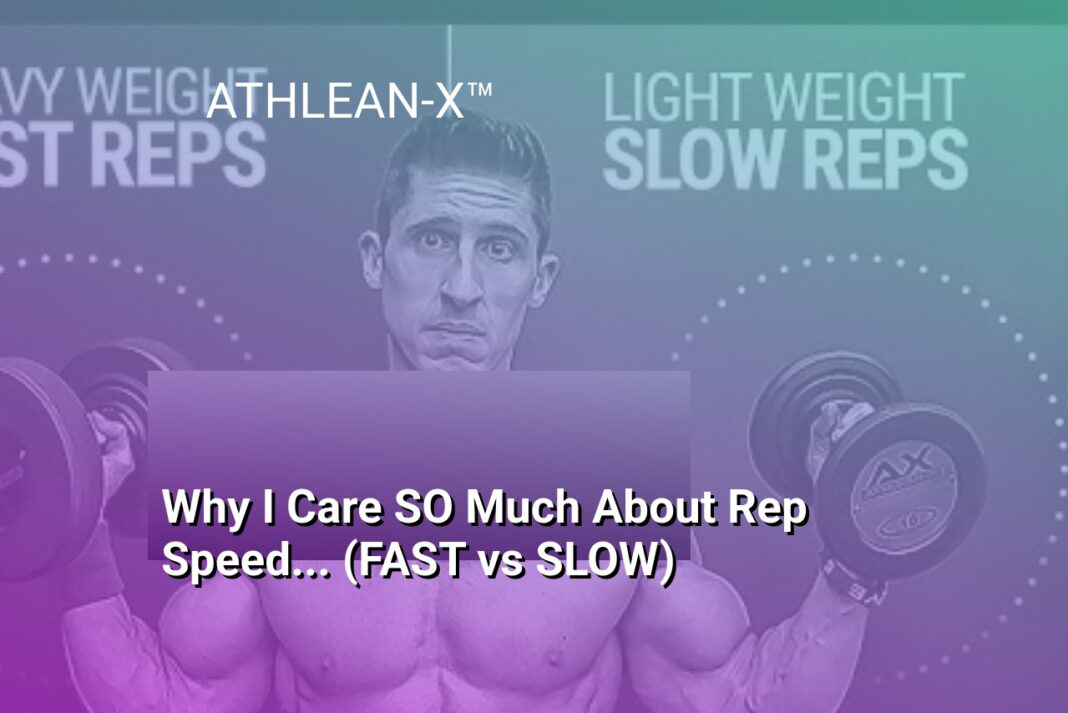The Bottom Line:
Here’s the summary in the requested format:
- As a fitness enthusiast, I’ve learned that Lee Haney’s legendary bodybuilding approach emphasizes intelligent training and strategic nutrition for optimal physical performance.
- His eight consecutive Mr. Olympia titles demonstrate the power of a disciplined methodology focused on muscle stimulation rather than extreme exhaustion.
- Nutrition plays a critical role in his philosophy, with carefully selected foods like sweet potatoes, eggs, and spinach providing essential nutrients for muscle recovery and overall vitality.
- His weekly workout routine strategically targets different muscle groups through advanced techniques like super sets, ensuring comprehensive and balanced muscle development.
- Ultimately, Haney’s approach transcends traditional bodybuilding by promoting a holistic lifestyle that integrates physical training, mindful nutrition, and mental wellness for long-term health and peak performance.
Lee Haney’s Legendary Bodybuilding Career
Breaking Records and Dominating the Bodybuilding Stage
Lee Haney’s competitive bodybuilding journey represents an unprecedented era of excellence and dominance. His remarkable achievement of winning eight consecutive Mr. Olympia titles from 1984 to 1991 remains unparalleled in professional bodybuilding history. This extraordinary accomplishment surpassed Arnold Schwarzenegger’s previous record of seven titles, establishing Haney as a true legend in the sport. His physique was characterized by symmetry, proportion, and muscular development that set new standards for aesthetic bodybuilding.
Innovative Training Methodology and Competitive Edge
Throughout his competitive career, Haney revolutionized bodybuilding training techniques by introducing a more intelligent approach to muscle development. His famous philosophy of “stimulating not annihilating” muscles challenged traditional hardcore training methods. He emphasized controlled, precise movements that maximized muscle growth while minimizing potential injury risks. This approach allowed him to consistently maintain peak physical condition and develop a physique that was both massive and aesthetically pleasing.
Impact Beyond Personal Achievement
Haney’s influence extended far beyond his personal competitive achievements. He transformed public perception of bodybuilding, presenting a more holistic and health-conscious image of the sport. His disciplined approach to training, nutrition, and mental preparation inspired countless athletes and fitness enthusiasts worldwide. After retiring from competitive bodybuilding, he transitioned into coaching and mentoring, sharing his extensive knowledge and helping a new generation of bodybuilders refine their craft and understand the nuanced art of muscle development and physical transformation.
Nutrition Strategies for Muscle Growth and Longevity
Macronutrient Balance for Muscle Development
Achieving optimal muscle growth requires a strategic approach to macronutrient consumption. Protein serves as the fundamental building block for muscle tissue, with high-quality sources like lean meats, fish, and eggs providing essential amino acids. Complex carbohydrates from sweet potatoes, brown rice, and quinoa offer sustained energy and support muscle glycogen replenishment. Healthy fats from sources like walnuts, almonds, and salmon play a critical role in hormonal regulation and reducing inflammation, which is crucial for muscle recovery and long-term performance.
Nutrient Timing and Metabolic Optimization
Strategic nutrient timing can significantly enhance muscle growth and metabolic efficiency. Consuming protein and complex carbohydrates within 30 minutes post-workout helps initiate muscle protein synthesis and replenish energy stores. Incorporating protein-rich foods like Greek yogurt, egg whites, and lean meats throughout the day maintains a consistent amino acid profile. Supplementing with branched-chain amino acids (BCAAs) can further support muscle preservation and growth, especially during intense training periods.
Micronutrient Integration for Cellular Health
Beyond macronutrients, micronutrients play a pivotal role in muscle development and overall physiological function. Minerals like magnesium and zinc support testosterone production and muscle recovery, while antioxidants from spinach, berries, and other colorful vegetables combat oxidative stress. Vitamins D and B complex are essential for energy metabolism, immune function, and muscle protein synthesis. Incorporating a diverse range of nutrient-dense foods ensures comprehensive cellular support and promotes long-term muscle health and performance optimization.
Foods That Fuel Champion Performance
Protein Powerhouses for Muscle Growth
Lean proteins form the cornerstone of a champion’s nutrition strategy. High-quality protein sources like wild-caught salmon, organic chicken breast, and grass-fed beef provide essential amino acids critical for muscle repair and growth. These proteins not only support muscle development but also enhance metabolic function and support sustained energy levels throughout intense training sessions. Incorporating diverse protein sources ensures a complete amino acid profile, which is fundamental for optimal muscle protein synthesis and recovery.
Complex Carbohydrates: The Strategic Energy Source
Complex carbohydrates play a pivotal role in fueling athletic performance and maintaining steady energy levels. Sweet potatoes, quinoa, brown rice, and steel-cut oats deliver sustained energy release, preventing rapid blood sugar fluctuations. These nutrient-dense carbohydrates provide essential glycogen stores for high-intensity workouts while supplying crucial micronutrients like magnesium, potassium, and B-vitamins. Strategic carbohydrate consumption helps athletes maintain muscle glycogen levels, supporting prolonged training sessions and accelerating post-workout recovery.
Essential Fats for Hormonal Optimization
Healthy fats are instrumental in hormonal balance and overall metabolic function. Sources like wild-caught salmon, walnuts, almonds, and avocados provide omega-3 fatty acids that reduce inflammation, support joint health, and optimize testosterone production. These strategic fat sources enhance nutrient absorption, promote cardiovascular health, and contribute to maintaining lean muscle mass. By incorporating high-quality monounsaturated and polyunsaturated fats, athletes can support their body’s natural hormonal processes and maintain peak physical performance.
Advanced Training Techniques and Weekly Workout Plan
Progressive Overload and Muscle Stimulation Strategies
Advanced bodybuilding requires strategic muscle stimulation techniques that go beyond traditional weight training. Lee Haney’s approach emphasizes progressive overload through calculated intensity variations and precise muscle targeting. By systematically increasing weight, adjusting repetition ranges, and implementing strategic rest periods, athletes can consistently challenge muscle groups without causing unnecessary strain or potential injury. The key is maintaining muscular tension while allowing adequate recovery, which means carefully manipulating variables like time under tension, rep ranges, and exercise selection.
Periodization and Training Cycle Management
Effective bodybuilding demands a structured periodization approach that prevents plateaus and promotes continuous muscle adaptation. Haney recommends dividing training cycles into distinct phases: hypertrophy, strength, and recovery. Each phase targets specific physiological adaptations, ensuring comprehensive muscular development. During hypertrophy phases, focus on moderate to high repetitions with moderate weights. Strength phases involve lower repetitions with progressively heavier loads, while recovery phases incorporate lighter resistance training and active mobility work to prevent overtraining and support joint health.
Advanced Resistance Training Techniques
Incorporating sophisticated training methods can dramatically enhance muscle growth and performance. Techniques like drop sets, where weights are reduced mid-set to extend muscle fatigue, and pre-exhaustion training, which isolates specific muscle groups before compound movements, can significantly improve muscular development. Superset protocols that pair antagonistic muscle groups or implement minimal rest intervals create metabolic stress and promote enhanced muscle protein synthesis. Additionally, implementing eccentric training protocols, which emphasize controlled negative movements, can stimulate additional muscle fiber recruitment and accelerate strength gains.
Holistic Philosophy of Health and Fitness
Mind-Body Integration in Fitness
True fitness transcends mere physical transformation, representing a comprehensive approach that harmonizes mental, emotional, and physiological dimensions. Lee Haney’s philosophy recognizes that peak performance emerges from understanding the intricate connections between psychological resilience and physical capabilities. Athletes must cultivate a holistic mindset that views training as a mechanism for personal growth, not just muscular development. This perspective demands intentional awareness, where each repetition becomes an opportunity for self-discovery and mental fortitude.
Nutritional Synergy and Metabolic Optimization
Nutrition serves as the foundational pillar supporting comprehensive health and athletic performance. Beyond macronutrient calculations, Haney emphasizes understanding how specific foods interact with individual metabolic processes. Optimal nutrition involves selecting nutrient-dense ingredients that provide sustained energy, support cellular regeneration, and enhance recovery mechanisms. By strategically combining proteins, complex carbohydrates, and essential fatty acids, athletes can create a nutritional blueprint that supports muscle growth, metabolic efficiency, and long-term physiological resilience.
Holistic Recovery and Regeneration Strategies
Recovery represents a critical yet often overlooked component of comprehensive fitness development. Effective regeneration extends beyond passive rest, incorporating deliberate practices that support muscular repair, neurological adaptation, and psychological restoration. This includes strategic sleep management, stress reduction techniques, active recovery protocols, and mindful movement practices. By treating recovery as an active process rather than a passive state, athletes can optimize their physiological adaptation, reduce injury risks, and maintain consistent performance progression. The goal is creating a sustainable approach that supports long-term athletic development while preserving overall wellness and preventing burnout.





